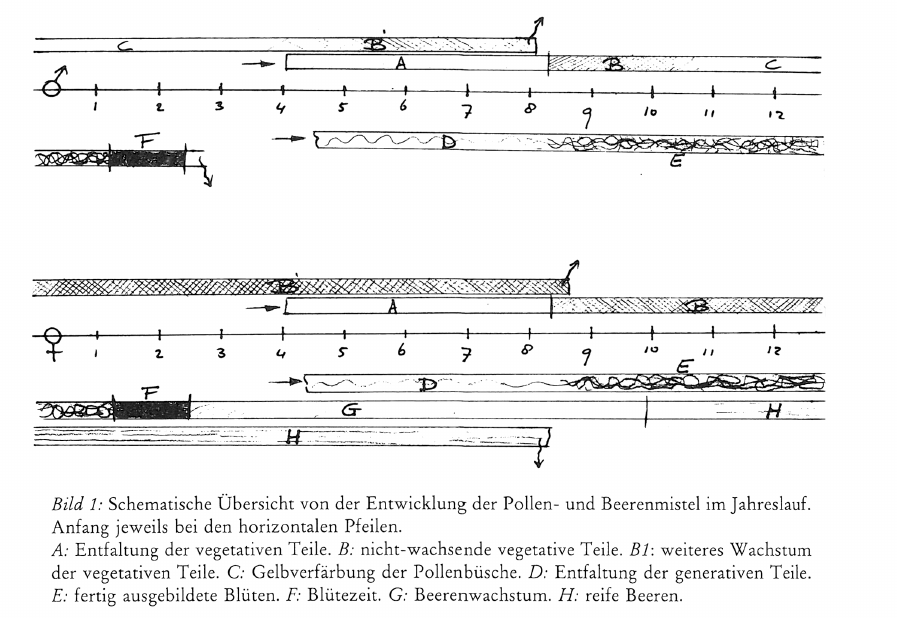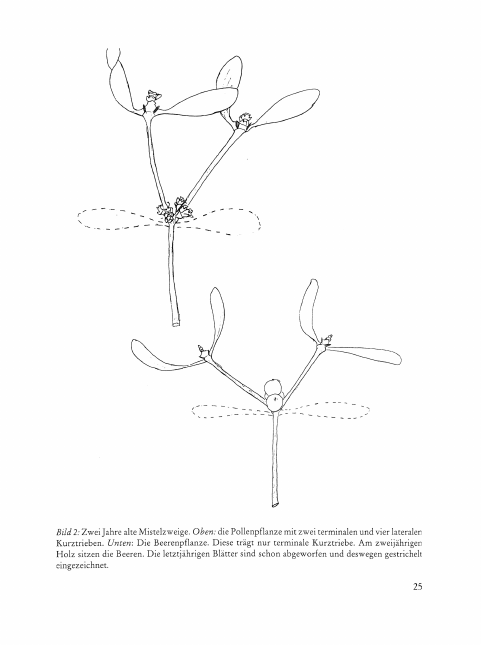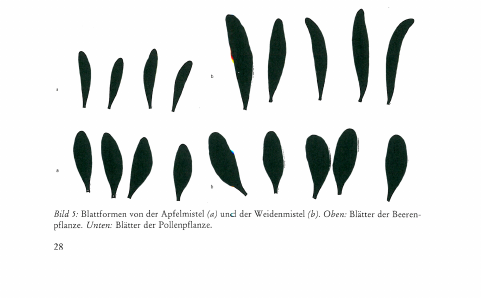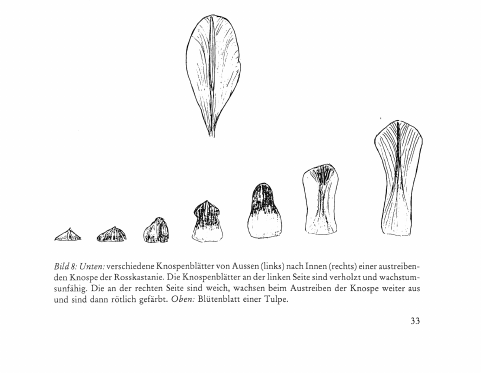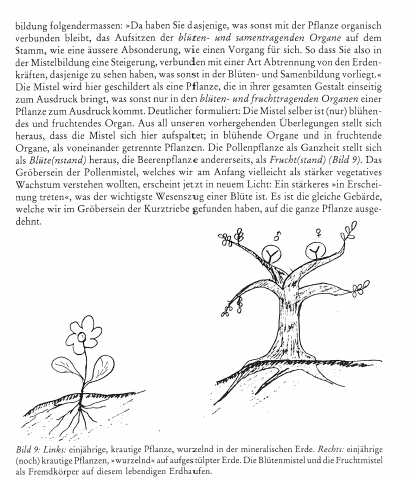Die Zweihäusigkeit der weissbeerigen Mistel (Viscum album L.)
Export Article Citation as
- Plain text
- BibTeX
- RIS format
- Download price : € 6.00
Abstract:
In anthroposophical medical science, Mistletoe is certainly the most examined plant. This article deals with sexual dimorphism in the mentioned species. In two previous articles, the general characteristics of dioeciousness have been outlined with the use of examples (Elemente no. 55 and 56), and are again being found in Mistletoe. This can be expressed by the following image: »The Pollenplant as a Whole becomes flower, the seedplant as a whole becomes fruit.« This polarisation reaches it’s greatest extend in winter, when the plant is in full blossom and is less obvious in summer. Winter and summer Mistletoe are the two components of a drug against cancer. The question is whether this polarisation in the winter Mistletoe can help us to modify such a drug in a meaningful way. This necessitates not only a complete understanding of man’s relationship to the plant kingdom, but also a comprehension of the processes in the human being that actually lead to cancer. It is hoped that the questions formulated in this article will stimulate research and further thinking in the mentioned directions.
